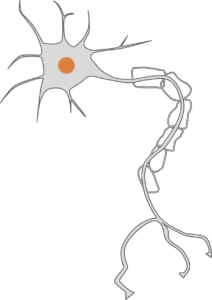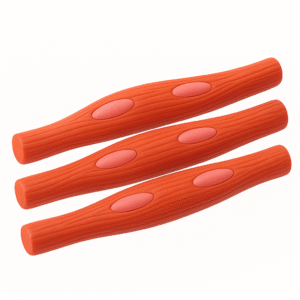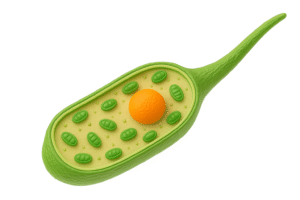atomistica.online
Cells – the building blocks of life
Cells – the building blocks of life
Why are cells important?
Every living thing is made of cells, from tiny bacteria to humans, is made of cells. They are often called the “building blocks of life.” They are the smallest units of life, yet they carry out all the processes needed for survival: taking in nutrients, producing energy, growing, dividing, and responding to their environment.
Without cells, there would be no life. From bacteria to plants to humans, everything starts with cells.
What do cells do?
Cells perform essential functions:
- Provide structure to the body
- Take in nutrients and convert them into energy
- Produce proteins and other important molecules
- Remove waste products
- Divide to make new cells for growth and repair
Two main types of cells
- Prokaryotic cells – small, simple cells without a nucleus (e.g., bacteria).
- Eukaryotic cells – larger, complex cells with a nucleus. They include:
- Animal cells – have a nucleus, mitochondria, and other organelles, but no cell wall or chloroplasts.
- Plant cells – similar to animal cells but also have a cell wall, chloroplasts (for photosynthesis), and a large vacuole for storing water.
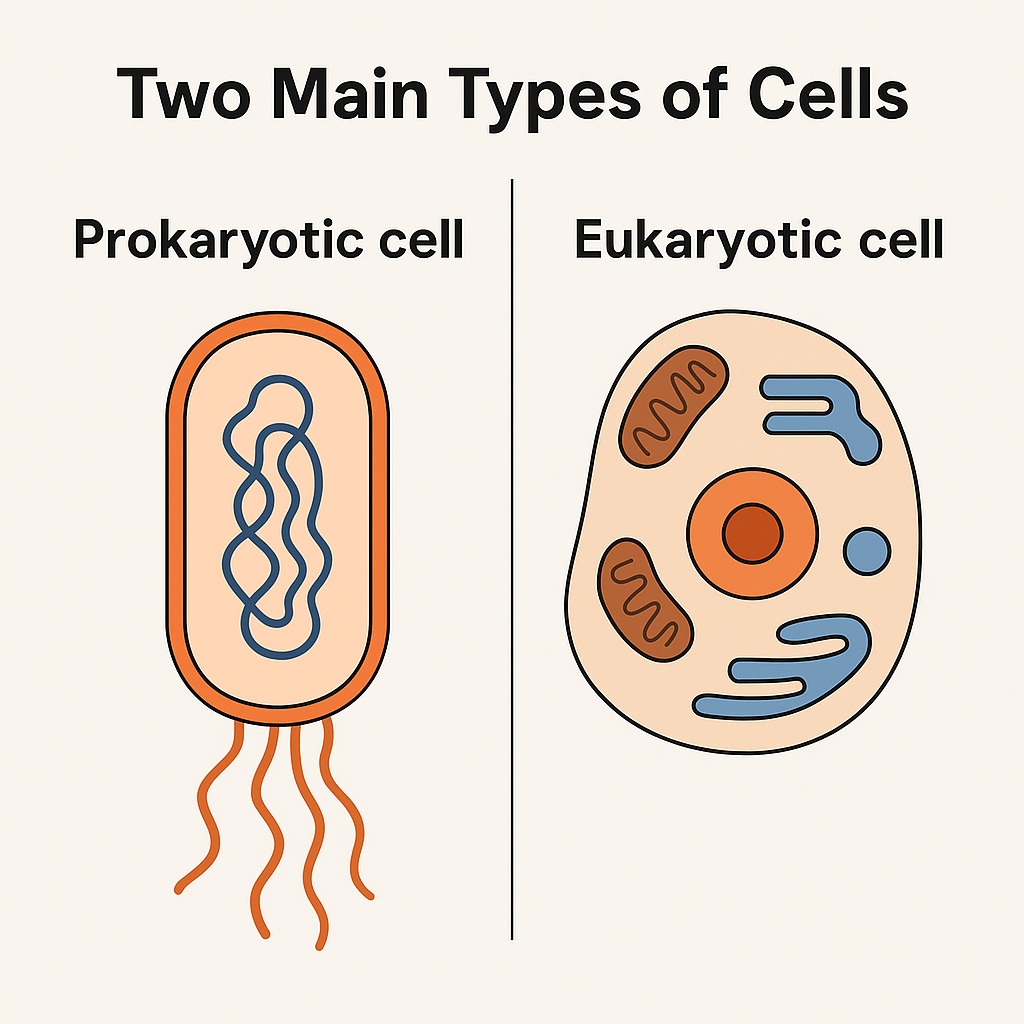
Inside the cell – organelles
Eukaryotic cells have specialized structures called organelles, each with a unique role:
- Nucleus – controls the cell and stores DNA
- Nucleolus – produces ribosomal RNA (rRNA) and assembles ribosome subunits needed for protein synthesis.
- Cell membrane – controls what enters and leaves the cell
- Cell wall – provides support and protection (in plants, fungi, and some bacteria)
- Chloroplasts – capture sunlight for photosynthesis (in plant cells)
- Centriole – helps organize the spindle during cell division and is involved in the formation of cilia and flagella. Centrioles are always present in pairs, inside a structure called the centrosome (in animal cells)
- Cytoplasm – jelly-like fluid where cell processes happen
- Mitochondria – release energy through respiration (“powerhouses of the cell”)
- Ribosomes – make proteins ()
- Endoplasmic reticulum – transports and processes proteins and lipids
- Golgi apparatus – packages and ships proteins
- Lysosomes – break down waste (mainly in animal cells) they are the cell’s “garbage collectors and recyclers”
- Vacuoles are the “storage tanks” of the cell – they keep water, food, and waste, and in plants, they help maintain firmness
- In plant cells – usually there is one large central vacuole, which takes up most of the cell’s interior
- In animal cells – vacuoles are smaller and more numerous, and their role is less important than in plant cells
Structure of animal cell
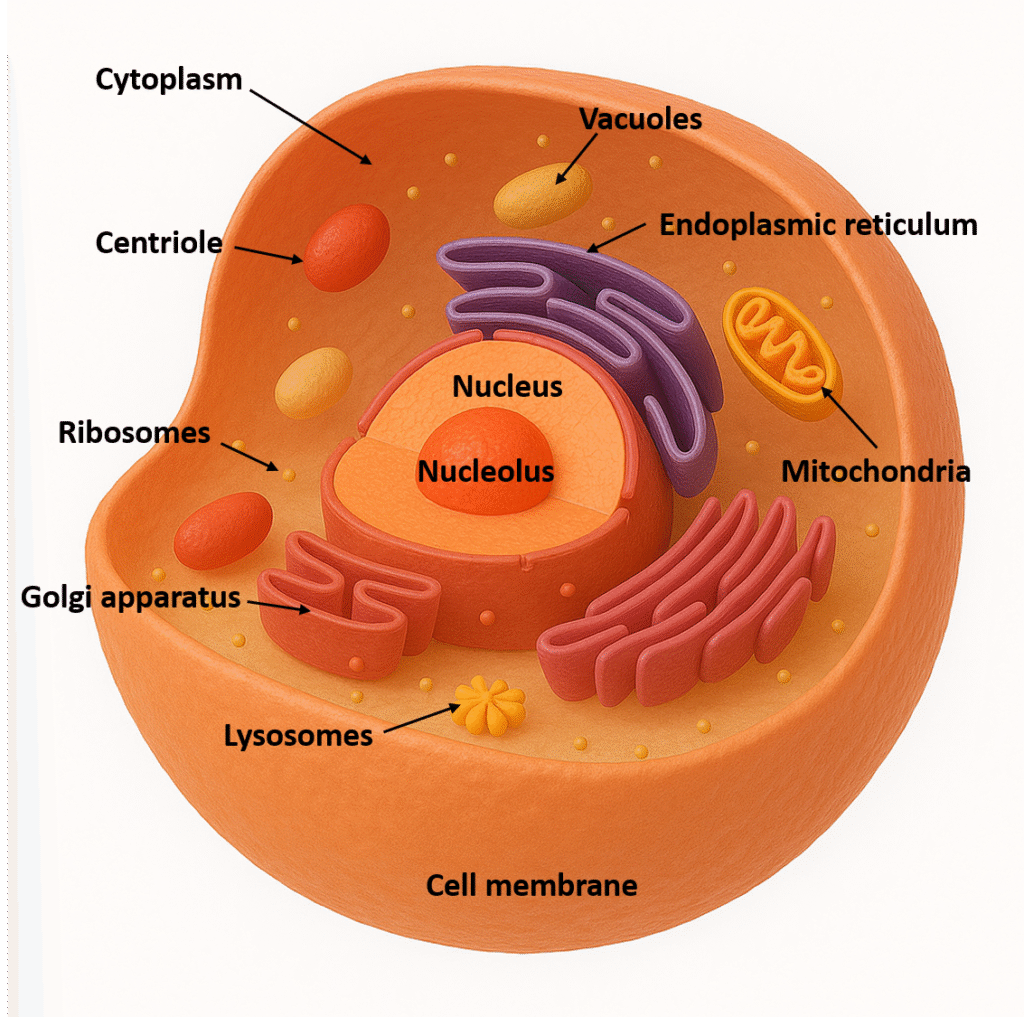
Structure of plant cell
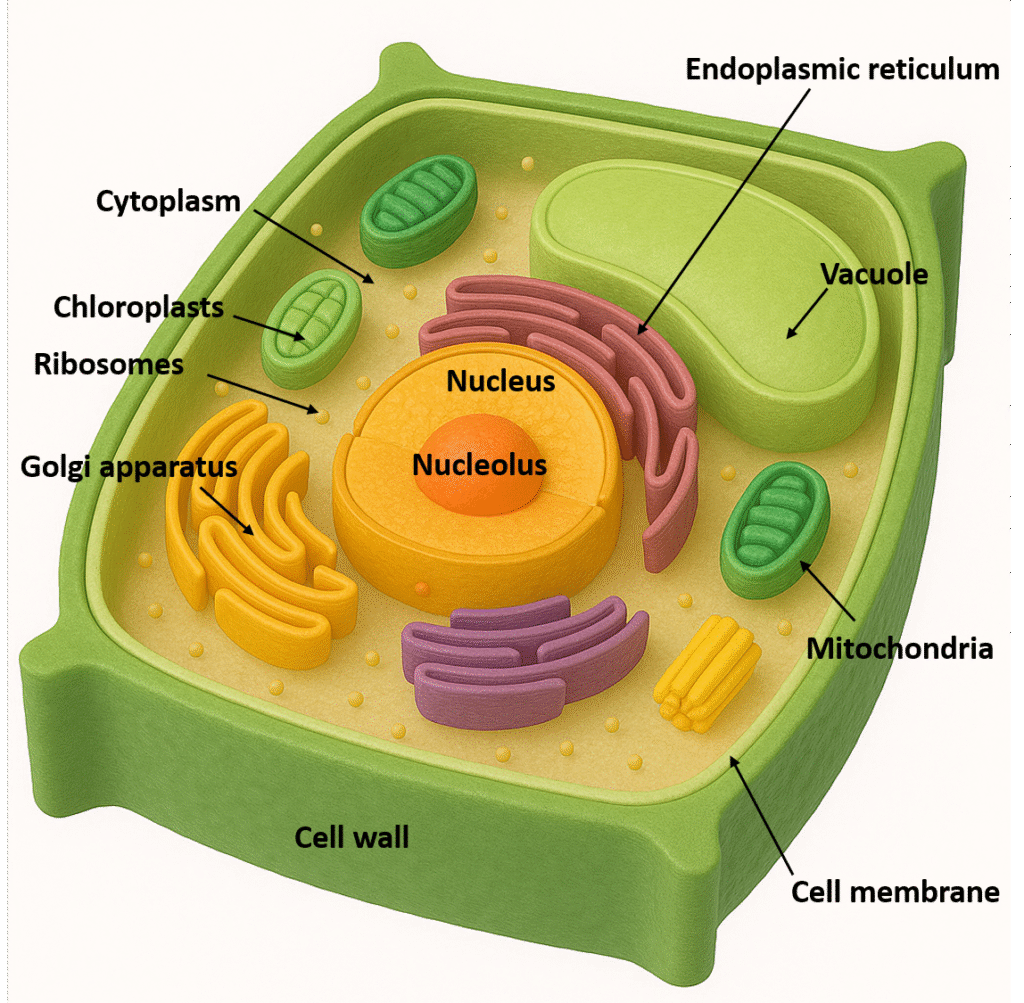
Specialization of cells
In multicellular organisms, cells are specialized:
Why study cells?
Studying cells helps us understand:
- How life works at its most basic level
- How diseases affect the body
- How new medicines are developed
- How plants produce food and oxygen for life on Earth
Some interesting facts
- The scale of cells
- The average human cell is only about 10-30 micrometers in diameter, so about 10 cells could fit across the thickness of a sheet of paper.
- The largest known single cell is the ostrich egg, which can weigh more than a kilogram.
- Number of cells in humans
- The human body has around 37 trillion cells.
- Every second, your body produces about 2-3 million new red blood cells to replace old ones.
- Specialized powerhouses
- Mitochondria, often called the “powerhouse of the cell”, actually originated from ancient bacteria through a process called endosymbiosis.
- That’s why mitochondria still have their own DNA and can divide independently.
- Strange shapes
- Cells are not always round or square; they can have unusual shapes adapted to their jobs:
- Nerve cells can be over a meter long in humans.
- Plant root hair cells have long extensions to absorb water efficiently.
- Invisible to the naked eye
- Most cells are invisible without a microscope. The invention of the microscope in the 17th century by Robert Hooke and Antonie van Leeuwenhoek opened up an entirely new world of biology.
- Cells communicate
- Cells “talk” to each other using chemical signals. For example, hormones travel through the blood to tell cells when to grow or divide.
- Cells and immortality
- Some cells seem almost “immortal.”
- Cancer cells, like the famous HeLa cells from Henrietta Lacks, have been dividing continuously in labs since the 1950s.
- In contrast, most normal human cells can only divide about 40-60 times before they stop (this is called the Hayflick limit).
Atom Color Legend:
● Carbon (C)
● Nitrogen (N)
● Oxygen (O)
● Iron (Fe)
● Sulfur (S)
● Hydrogen (H)

